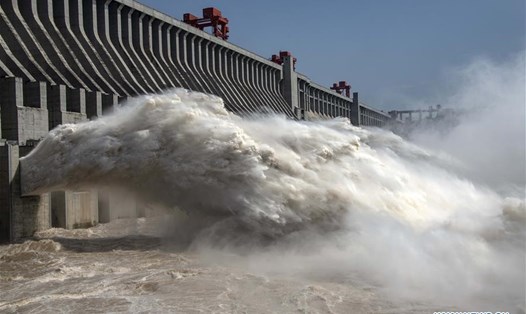Floods affect consumption
China has avoided recession after its economy grew by 3.2% in the second quarter of 2020 - the first major economy to show a recovery from the COVID-19 pandemic after GDP in the first quarter fell to 6.8% for the first time.
But the consumption ratio - hard hit by the pandemic - remains a weakness of China after retail, down 1.8% in June, despite improving from a 2.8% decline in May.
"Consumption is still weak. Retail sales are steady, but even in June, they were still below the level recorded at the same time in 2019," SCMP quoted S&P Global Ratings Asia-Pacific credit rating agency's chief economist Shaun Roache as saying.
In addition, China's recovery path could be hampered by floods in the past two months, disrupting manufacturing and construction activities - the main driver of China's growth in the second quarter.
Zhao Qinghe, senior statistics officer at the National Statistical Office (NBS) of China, said that small companies continue to face pressure in both supply and demand.
"Some businesses have reported that flood-related disasters have caused disruption to logistics and transportation, along with problems such as flooding in factories, equipment and inventories," said Mr. Zhao.
China's PMI manufacturing index in July was 51.1, while the non-producing PMI was 54.2.
Analysts said weak demand and lockdowns in some areas of China to curb the next COVID-19 wave also added to consumer pressure.
"The floods have devastated many places. But I think that, at the macro-economic level, the damage caused by floods is not big enough to really affect the growth of the national economy. In addition, it may have some impact on food prices, but that is short-term and insignificant," said Louis Kuijs, senior Asian economist at Oxford Economics.
"I think the COVID-19 epidemic is likely to have a greater impact on the macro economy, because an epidemic in one place can affect people's behavior nationwide, making people unable to go out and participate in activities normally" - Mr. Kuiji analyzed.
The Chinese government estimates that flood damage in 27 provinces is likely to reach 144.43 billion yuan ($20.6 billion).
"This year's flood disaster has seriously affected production and daily life in some areas," National Statistical Office spokesman Liu Aihua commented on China's economic recovery in the second quarter.
Meanwhile, the flood has not passed, China is continuing to suffer from new storms. On August 2, eastern China raised the Hagupit storm emergency warning to level 3 - the fourth storm of the year to hit China.
Huatai Securities said in a report last week that fixed-asset investments in July could fall slightly from 5.3% to around 4-4.5%, as investments in infrastructure and real estate fell due to floods.
The second wave of COVID-19
China recorded its highest number of new COVID-19 cases in more than 3 and a half months last week, mostly in Xinjiang.
At least nine Chinese cities have also reported infections involving the Imperial City, a port city in northern China, where a new outbreak cluster has emerged in the past week.
Analysts from China International Capital Company (CCC) said in a report on July 29 that a new wave of infections in China and other countries could harm consumption.
After Beijing experienced a new COVID-19 outbreak in June, retail sales in the capital fell 26.8% year-on-year, compared to an 18-point decline in May.
Since July, the second wave of COVID-19 in Beijing has been basically controlled, but a new wave has broken out in Xinjiang and Liuzhou, CCC report said. If many provinces experience a second outbreak in the future, the recovery of domestic consumption will be slow down.








